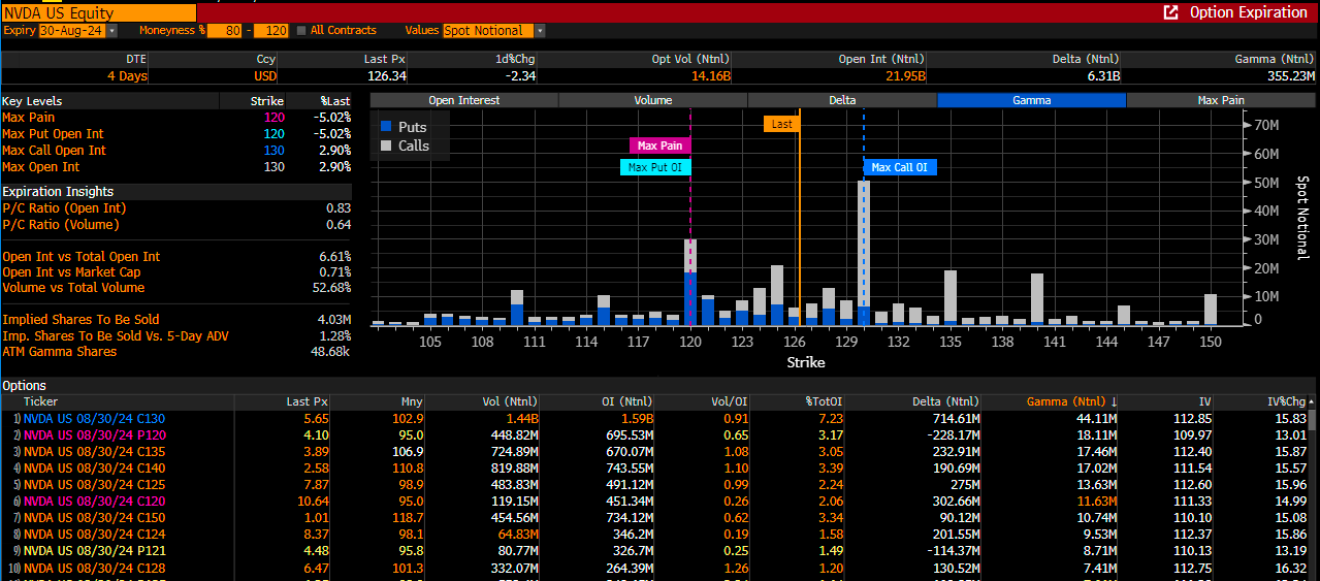It was a quiet day in the markets yesterday, with the S&P 500 slipping about 0.3% and the Nasdaq 100 down 1%. Investors appear to be in a holding pattern, awaiting Nvidia (NASDAQ:NVDA) results on Wednesday afternoon. Notably, the stock's implied volatility for $130 calls expiring on August 30 surged above 110% yesterday.

(BLOOMBERG)
Markets Bet Big on Post-Earnings Surge
The market is betting on the stock going higher after the results, with the 1-week 105% moneyness IV trading at 110% and the 95% moneyness IV at 108%. While the 1.9% spread between the puts and calls isn’t at its lowest level over the past year, it’s still low. This indicates the market’s mindset, with strong demand to own upside in the stock.
(BLOOMBERG)
The amount of call gamma in Nvidia is overwhelming the stock for this week’s expiration. This means that after the results are released, the high levels of implied volatility (IV) will melt, leading to a decay in both calls and puts premiums. The challenge here is twofold: first, the market is paying a higher IV to own the upside, and second, the sheer volume of call gamma and delta far outweighs the put side.
(BLOOMBERG)
This commentary often discusses volatility crushes, especially following events like Fed meetings or major economic data reports. This is typically because, before such news, investors hedge by buying puts. When the data is released, implied volatility (IV) drops, causing those puts to lose value as they are sold. This can create a mechanical bid in the market, pushing it higher, no matter what the news is.
With Nvidia, we may see a similar IV crush following their earnings release. However, instead of the usual scenario where puts lose value and contribute to a market rise, this time, it’s the calls that might get burned. This could lead to a situation where the stock trades lower after the results are announced.
Of course, as with economic data, if the earnings report is strong enough, it might not matter—the stock could still rise. However, it could significantly drop if the results only come in line or fall short of the market’s heightened expectations.
